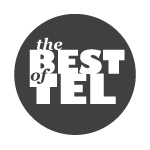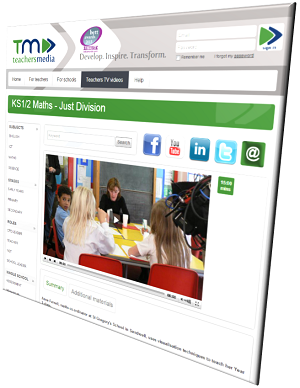
-
Learning Edge Upgrade Webinar: “Play it again, Sam”

We wanted to say a big THANK YOU to everyone who attended the Blackboard VLE Summer Upgrade webinar yesterday. We hope it met your expectations and that you came away with a better understanding of the new Blackboard tools at your disposal, as well as the benefits you can gain from the feature improvements.
As I mentioned during the webinar, the session is now available for everyone to watch again. You have 2 options to replay the session, the first being YouTube:
Secondly, you can click on the following URL you access the entire session via Blackboard Collaborate:
http://tinyurl.com/LTDstaffdevSP12
Feel free to get in touch with us at [email protected] if you have any questions or would simply like to know more about the upgrade.
Mark Wilcock
Learning Technology Development Officer
-
Learning Edge Upgrade: Now Completed
Upgrade Sucess
The scheduled Leaning Edge Blackboard 9.1 upgrade has been completed successfully and you can now login as normal.
As well as ensuring the highest level of performance and stability this upgrade will ensure Edge Hill staff and students have access to a modern feature rich system. We hope you like it!
As with any upgrade, you may find some unexpected behaviour– if you do spot any problems please let us know asap so we can investigate and get them resolved for you.
Where can you learn more?
As mentioned in a previous blog post, the LTD team are facilitating an online webinar (via Collaborate) at 2.30pm on Wednesday 24th July. This session will introduce you to what’s new, provide you with an opportunity to ask questions and help you explore where and how to make the most of the new improved system.
Please Feedback
Take your time to explore the upgraded system and let us know what you think.
Contact the Learning Technology Development team to share any queries or comments you have regarding the upgrade or the online webinar– leave a comment below, email [email protected] or call 01695 650754.
Meg Juss
Learning Technology Development ManagerLearning Services: Learning Technology Development Division
-
Has Video Thrilled the Students so Far?
How video has been used to enhance engagement and the student learning experience on a blended learning programme
The Mathematics Specialist Teacher (MaST) Programme is a blended course for serving primary maths teachers aimed at improving subject knowledge, pedagogy and collaborating with colleagues in school. It includes Conference Days with nationally recognised speakers, Local Meetings led by maths consultants and online learning materials, all of which are linked via the VLE. As online materials can too often be very dry, we have included a variety of approaches to provide students with a positive experience, including the use of videos in various contexts.
Within the learning materials, links to video clips on sites like YouTube help exemplify both the theoretical and practical ideas the students cover. For example, how to use practical resources and visualisation techniques to support the understanding of difficult concepts such as “3 divided by a half” (The answer is NOT 1 ½ … Click to ‘Watch and Learn’!).
Via discussion boards, students are also encouraged to share links to useful videos. They are using these resources within their practice on a daily basis, so it seems natural to get them to share examples of good practice. For example, this idea of a ‘Fraction museum’ was posted by a student – here’s the link to the YouTube video: Fraction Lesson: teach your class fractions with Math Man.
One of the key requests in the recent Edge Hill survey into Students’ ideal VLEs was for the opportunity to be able to watch the lecture again later. Throughout the programme, we ask for permission to film our keynote speakers, and now have many of their sessions available within Blackboard. This means not only can students revisit lectures at a later time, students who were unable to attend or missed a speaker who delivered at an alternative geographical location, can still have access (although we do stress that this is not quite the same as attending in person…!) The agreement with the speakers though, is that these are only available to the students registered on the programme.
As well as using video to enhance the experiences of current students, the MaST Team, in association with the Media Team, has produced a Recruitment / Marketing Video. This link is now being sent out to prospective students and is included on our own website as well as via other channels like the National Centre for Excellence in the Teaching of Mathematics (NCETM).
We are always looking for ways to improve the student experience, and as a result of some of the feedback we received from students, following our submission for the Blackboard Exemplary Course Programme* award (ECP) and having seen other courses that we reviewed with the LTD team, we are now looking to include short video clips of various members of the team (Academic, admin, ATs etc.) in a ‘Welcome’ area so that students can immediately put faces to names, thus giving the course a more ‘personal’ or ‘human’ face in what some students may see, at first, as a rather intimidating online environment.

Steve Sherer
Senior Lecturer
Mathematics Specialist Teacher ProgrammeFor further help, support and advice on how you can use video, YouTube and similar services with the Learning Edge Suite contact your Learning Technologist (see the Faculty Contacts on this page) or email the LTD Team on [email protected] or call x7754.
*Note that Blackboard’s ECP programme starts next Monday (22nd July) – it’s a “… free online course over a 4 week series of virtual meetings via Blackboard Collaborate (web conferencing platform). Using their ECP rubric the sessions are delivered by Blackboard ECP directors and previous winners who will expand upon each element of the rubric”. Click on the text above to see Mark Wilcock’s post about the programme – or contact him directly: [email protected] (x7069).



